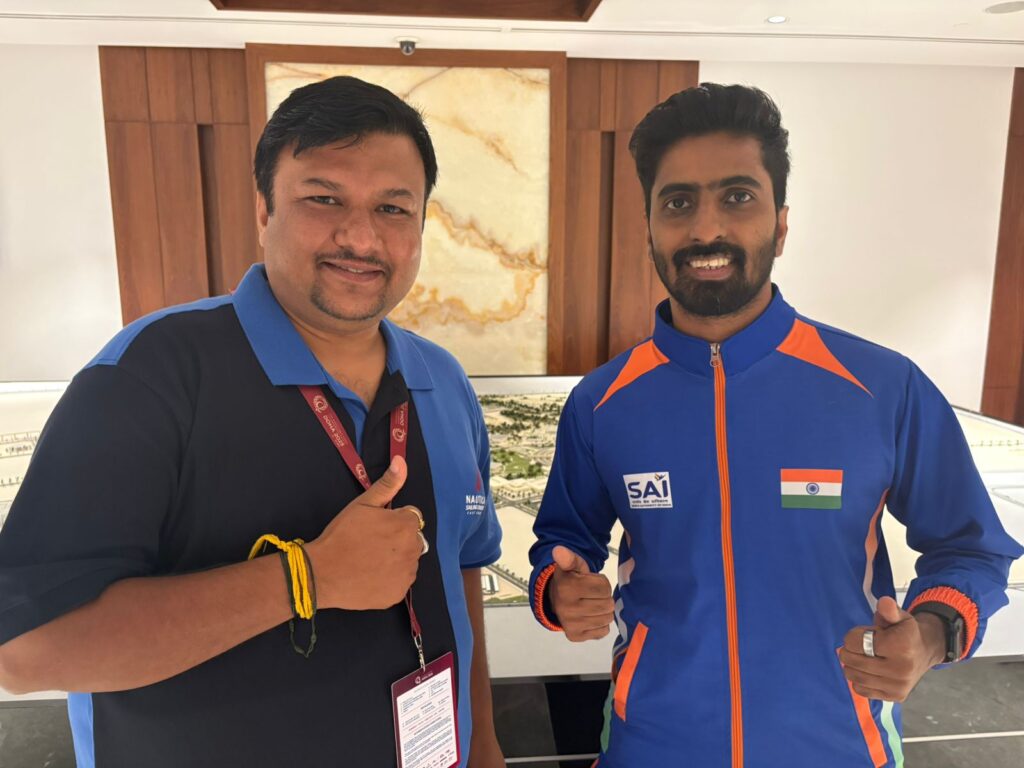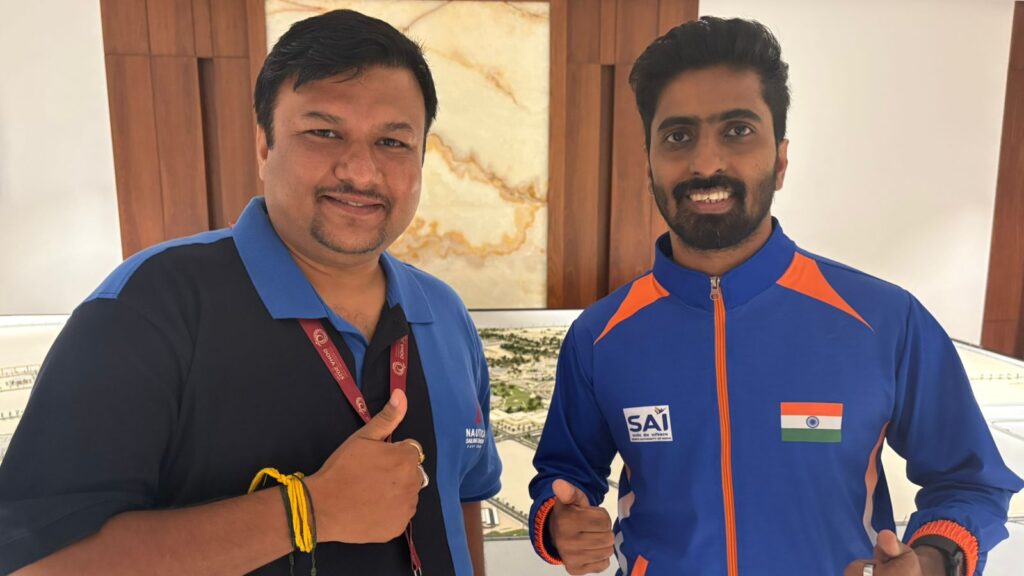
Representing India at the World Table Tennis Championships in Doha for the tenth consecutive time, Sathiyan Gnanasekaran knows better than most just how steep the climb is in international table tennis. With giants like China, Japan, and South Korea dominating the sport for decades, breaking through as an Indian paddler requires not just talent, but relentless perseverance.
“This is my 10th World Championship and every time it feels special,” said Sathiyan. “With the new format of just 32 seeds, I’m facing Thibault Poret from France (seeded 29th) in the first round – a tough opponent who recently made the finals in Chennai (WTT contenders). But I’m well-prepared and confident. I’ll give my best and see where it takes me.”
Sathiyan is one of those rare Indian players to have won medals at both the Commonwealth Games and the Asian Games — a testament to how far Indian table tennis has come. “It all started with CWG, then came Asian Games, and now we’re here pushing at the Olympic and world levels,” he said. “Taking it step by step gives you confidence, and today, Indian table tennis commands a different level of respect globally.”
One of the cornerstones of India’s recent progress has been consistency and camaraderie. Sathiyan’s long-standing partnership with Harmeet Desai, dating back to when they were just nine or ten, is a perfect example. “We’ve grown up playing together,” said Sathiyan. “That connection really helps in high-pressure doubles matches. We’ve got a strong chance in the first round.”
Exclusive
“Indian Paddlers Can Surprise the World!” | Sathiyan Gnanasekaran Ahead of World Championship#SathiyanGnanasekaran #TableTennis #WorldChampionships @ThumsUpOfficial @iabhijitdesh @sathiyantt pic.twitter.com/MO5Iw2slPn
— RevSportz Global (@RevSportzGlobal) May 17, 2025
Sathiyan is also proud of the current team set-up. “This is probably one of the best Indian teams I’ve been part of — a mix of youth and experience,” he said. “We trained hard together before the championship, and the bonding really helps, especially when someone is having a tough day. We’re here to support each other, and I’m hopeful of making this my best World Championship yet.”
With the retirement of Indian table tennis legend Sharath Kamal, Sathiyan now finds himself in the role of team senior — a transition that brings both pride and responsibility. “Sharath has been a constant presence for decades,” said Sathiyan. “It feels strange without him, but he’s still around in a new role on the athletes’ commission. For me, it’s now about guiding the younger players and helping them manage the pressure — just like he did for us.”
As for India’s prospects in Doha, Sathiyan is optimistic. “We’ve surprised people in the past,” he said. “If someone makes the Round of 16 in singles, it’ll be a big achievement. In doubles, we’ve got a real shot at reaching the quarterfinals, maybe even the semis if we pull off an upset.”
Looking ahead, Sathiyan sees a bright future for Indian table tennis. “There’s been a sea change — with the advent of UTT and more WTT events, the respect for Indian TT on the world stage has grown immensely. We’re no longer underdogs; we’re a threat. The top nations don’t take us lightly anymore. Our aim is to break into the top five teams globally, get more singles players into the top 20, and bring that Olympic medal closer to reality.”
In a sport historically dominated by a few powerhouses, players like Sathiyan are steadily changing the script — not with a single leap, but one determined step at a time.
For all sports updates, follow RevSportz




